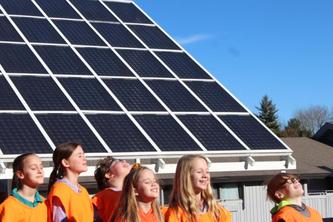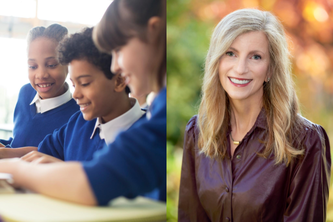Minnesota pre-K, K-12 educators express concerns and hope about distance learning during COVID-19 in U of M survey

A new, statewide examination from the University of Minnesota shows primary and secondary educators are concerned about continuing distance learning in the fall and students’ access to technology. However, they also expressed worry about the feasibility or safety of returning to in-person learning amid the COVID-19 pandemic.
These insights are part of the findings from the Minnesota PK-12 Distance Learning Survey, which collected responses from 13,077 educators, including teachers, support professionals and administrators. Conducted in May and June 2020, the survey occurred after Minnesota schools were directed to move to distance learning instruction through Executive Order 20-02. In the survey, educators responded to questions about the successes and challenges associated with distance learning and provided additional context through open-ended questions.
The survey found that some educators described the end of the 2019-2020 academic year as “emergency work.” However, should distance learning continue, other educators indicated the work they conducted in the spring made them better prepared and equipped to teach and set expectations for the upcoming school year.
“Overall, what we found is that educators in our state are worried, yet optimistic about what fall will look like for them and their students,” said Katie Pekel, Ph.D., principal-in-residence at the College of Education and Human Development (CEHD) and lead researcher on the survey. “However, there is an inherent tension within our educators. They know the benefits of in-person learning and challenges that need to be addressed with distance learning, but they want everyone — including their students and their families — to be safe from the virus.”
Distance learning in spring of 2020
Ninety-nine percent of educators who responded to the survey stated they included an online component to their instruction in the spring of 2020. Educators reported solely utilizing real-time instruction via an online setting; only assigning online learning tasks the students conducted at their own pace; and a mix of both methods of instruction.
Reflected in the survey results are three primary areas educators say they and families need additional assistance in:
- navigating online platforms (e.g., Schoology, Seesaw, Zoom);
- effectively engaging students; and
- assessing students in these environments.
To address these concerns, educators suggested limiting the number of online platforms to make it easier for families to support students; provide dedicated training and technical support to families and students who need additional support in using platforms; and clearly communicating expectations for attendance or participation in distance learning.
“Educators also expressed worry about the inequities distance learning highlighted and if these inequities would become larger,” said Kimberly Gibbons, director of CEHD’s Center for Applied Research and Educational Improvement and researcher on the survey. “Access to technology was the most frequently cited concern, but educators also named a number of other challenges, including providing services to special education students and English as a second language learners.”
Successes and challenges
As part of the survey, educators were also asked to select three options they felt they were most successful in and three options they felt were the most challenging when in a distancing learning environment.
Teacher Responses
| Most Successful (Number of Responses) |
Most Challenging (Number of Responses) |
| 1) Using technology (7,400) | 1) Assessment (5,192) |
| 2) Connecting with students (5,161) | 2) Supporting the needs of special education students (4,643) |
| 3) Connecting with families (4,309) | 3) Connecting with students (3,392) |
“While teachers selected technology and connecting with students and families as their most successful areas during distance learning, these were areas educators expressed an overwhelming desire for more support in the answers to their open-ended answers,” said Gibbons. “This could be the result of a mindset where educators felt successful, but also feel like they could improve in this area.”
Support professionals and administrators expressed similar challenges with supporting the needs of students with disabilities, supporting students’ mental health needs, and assessing student learning as challenges during distance learning. Additional information can be reviewed in the Minnesota PK-12 Distance Learning Survey.
“Ninety-four percent of the educators who responded to our survey have some level of worry that the pandemic is interfering with their ability to do their job,” said Pekel. “If distance learning is to continue in the fall, it can be more effective if educators can obtain the resources they need to better connect with students and their families.”
The Minnesota PK-12 Distance Learning Survey was funded by the University of Minnesota College of Education and Human Development (CEHD).





